An Unknown Pyramid in the Heart of Maya Land Awaits
Chapter 21: Colonial cities and off the grid pyramids

Hola Amigos! In making the most of vacation time during our inaugural visit to Casa Maya, our new house in the Yucatán, we took to the road. Along with fiestas and beach time, a day trip to Valladolid and the pyramids at Ek Balam were part of the holiday fun.
Valladolid was a Yucatán city with a disastrous history. Not unlike Atlanta in the old South, it crashed and burned, but in a slow motion debacle that lasted three centuries. The city was founded in 1543 by the nephew of Francisco de Montejo, conqueror of the Yucatán. Montejo gave his nephew sovereignty over lands to the east of Merida. The nephew explored the area, making his base next to a lagoon.
He named the new city Valladolid and authorized land grants to 45 Spaniards, displacing the indigenous Maya who already lived there. In what would become a continuous cycle, the Spaniards subjugated the local Maya tribes and constantly battled them for dominion as they rose up in rebellion.
Caste War
The Spaniards would crush the rebellion, the Maya would rise again, culminating in 1847 in the bloody massacre known as Caste War of Yucatán,1 a war that killed 250,000.
“Paul, you won’t believe this history,” I said as I shifted positions in our rental car. “We’re heading straight into the heart of Maya land.”
From what I read, no single element alone stoked the rebellion but as in most revolutions, a long dominated underclass was finally pushed to the limit by an overbearing uber class that performed intolerable deeds. Indentured servitude, land grabbing and water rights were but some of the issues that drove the Maya into full-fledged revolt.
Valladolid was the most elitist and race conscious city in the Yucatán. After a decade of skirmishes in 1847, when the local Maya learned one of their leaders had been put to death by firing squad, they rose up and marched on the city, hacking 85 people to death by machete, burning, raping, and pillaging.
Merida was sure to be the next staging ground for what was fast becoming a race war. In retaliation for the Valladolid massacre, Yucatecans descended on the ranch of a Maya leader and raped a 12-year old indigenous girl. With this affront, eight Maya tribes joined forces and drove the entire elite population of Yucatán to Merida, burning and pillaging as they went. So fierce was the slaughter that all non-Maya prepared to evacuate Merida and the peninsula by boat.
Rain cometh
But just as Maya tribes approached Merida, sure of victory, fate intervened. Great clouds of winged ants appeared in the sky. With this first sign of rain coming, the Maya knew it was time to begin planting. They laid down their machetes and headed home to their milpas. It was time to plant corn, a thing as simple and ancient as that.
In 1848 the Yucatecan staged a comeback, killed Maya leaders and reunified. This fighting would continue into the twentieth century, over 60 years. A three century struggle begun in 1543 when Montejo’s nephew subjugated those early Maya did not truly end until 1915 with the Mexican Revolution.
At that time, a Mexico general cancelled all debt labor, freeing 60,000 Maya and their families after 350 years of indentured servitude. But until the 1900s, the Caste War made it impossible for any light-skinned person to walk into the eastern Yucatán and come out alive.
We were on the cuota highway just outside Valladolid. After stopping to pay at the toll booth, the monotonous landscape of the eastern Yucatán prevailed. Flat and dry with occasional cecropia, the infrequent fenced farm and small hacienda was all there was to see. In five minutes we were at the outskirts of the city, driving on a narrow one-way street, past cement block houses. A mustard yellow wall hugged the road all the way to el centro.
An erect traffic cop, dressed in brown uniform with white gloves, directed cars in swift, confident movements. A shiny steel whistle hung from his neck but he didn’t seem to need it. Our rental car bolted forward towards the square, alive with people.
Girls sold handkerchiefs near the central garden; women sold huipiles, the embroidered white Maya dress still popular in Yucatán today; and vendors at soft drink stands sold sodas in plastic bags with straws. Wrought iron benches with wooden slats were filled with an assortment of locals and tourists. I gazed at an ancient stone church with tall spires on the south corner of the square as we rounded the traffic circle, looking for a sign to direct us to Ek Balam.
Although its past history was ominous, present day Valladolid was that pleasant contradiction one so commonly finds in Mexico—a busy city with one foot in the past and one in the future. Commerce prevailed, and the streets were lined with shoppers and vendors attending to daily chores and business.
Intrigued by the bustle, the charm and the colonial architecture, we parked the car in front of Hotel Meson de Marques. Next door there was an open-air arcade with numerous breakfast spots. An abundance of metal card tables with chairs crept into the center walkway. Waiters hawked seats, holding menus in hand, pleading for our business. We sat down at an enamel table with a bright blue Corona bottle—No Mas Fina—painted full center.
“Desayuno?” the waiter asked. Breakfast?
“Por supuesto.”
One of the joys of colonial Yucatán was having a break from the sky-high prices on the coast. Paul and I enjoyed an authentic Mexican breakfast for pesos and sauntered off a half hour later, ready to explore the pyramids at Ek Balam.
Another time around the traffic circle and we spotted the sign directing us to the site, 15 kilometers away. We followed a one-way street out of town, past small pharmacies, neat houses and tiendas. Once on the city outskirts, the road narrowed but was smooth and newly paved. Several kilometers later a sign pointed to the right and we took a turn that dipped down to an empty creek bed, then up the other side into a forgotten pueblo. Twelve-foot wide dirt streets bordered by rock walls divided us from ancient stone houses with tiny yards.
A pyramid awaits
At a crossroads, two squealing pink piglets ran dangerously close to our tires chased by a squawking red rooster. A hunched over old woman eyed our late model rent-a-car cautiously as we inched our way through this time warp in history.
Finally out of town, we welcomed the freedom of the open countryside. In the distance I saw a pyramid temple peeking above the low shrub landscape.
A simple green sign with an arrow and picture of a pyramid pointed down a side road. We turned onto the sacbe, the Maya name for these ancient pathways, and drove towards the site entrance.
At a primitive twig palapa, a caretaker appeared. He explained there was a 10 peso donation and asked if we wanted a guide. We said yes, and he pointed to a raven-haired boy of 10.
“Mi hijo, Jorge.” George, his son, would assist us. We dropped the pesos in a wooden box and followed the boy down the sacbe.
Except for his size, Jorge had all the attributes of a serious 40-year old. He was reflective, deliberate in his speech, and attentive. As we walked he began telling us the history of Ek Balam, bright star jaguar. The first site excavations were carried out by Frenchman Desire Charnay in 1886 and recent work began in 1987, when funding was granted one hundred years later. Although the city was compact, there was still much to be done. The number of buildings suggested Ek Balam had been both rich and powerful, possibly holding the position of agricultural center of the northwestern Yucatán.
We walked through a four-sided gateway arch that led to a sacbe that connected to all the Maya kingdoms in the northern Yucatán and beyond.
The views from the arch were breathtaking. “Paul, this is fantastic,” I managed to say.
A three-sided wall, either ceremonial or defensive, surrounded the city, similar to the wall at Tulum. Ek Balam was known to contain an astronomical observatory, a palace, tower, ball court, two cenotes and a building the archeologists named the Acropolis due to the sculptures found inside—full figure statues that looked more Greek than Maya.
From the 10-foot stairway at the arch, Jorge directed us through the ball court and to the remarkable Acropolis. He said it was twice the size of Chichen Itza’s El Castillo, with tunnels inside leading to tombs. A unique stucco fresco with life-sized statues intricately carved into it were unique to the Maya world. They appeared more Asian-looking, closer to Cambodia’s Angkor Wat than Chichen Itza, nothing like anything I’d ever seen in Mexico.
We climbed up the edifice to get a closer look at the remarkable statues. Burnished by time to a golden brown, it was impossible to believe they were here in Ek Balam. Paul stood before the stucco fresco.
“They look Greek or Indian. Look at that lotus position,” he said, pointing at a character with a Shiva-style headdress.
The Maya underworld
Through a hallway leading to the tomb of the ruler Ukit Kan Le’k Tok, founder of Ek Balam dynasty, was a 12-foot high stucco mouth with teeth, representing the gateway to the underworld, the Maya version of the River Styx. Archeologists theorize it was built by Ukit Kan Le’k Tok around 800 CE. 2The Maya so well preserved the stucco that no modern restoration was required.
Jorge was a perfect guide, absorbed in the details of the site and its history. He confided that his dream was to become an archeologist. We paid him for his guide work and he followed us out to the car.
Within minutes he became a 10-year old again, excitedly asking where we were from and where we were going. He opened my car door and in doing so, spotted my Maya ruins guide in the back seat.
Noticing how his eyes lit up I asked if he’d like to have the book.
“Si, si!” he said, looking excited at the prospect.
I told him it was in English. He assured me that was no problem.
The last image I have of Jorge was his holding the book as we pulled onto the ancient sacbe leading us away from Ek Balam.
If you’re interested in supporting independent journalism and writing, please consider a paid subscription to Mexico Soul. This is a free newsletter. I don’t paywall any of my posts, but you can choose to pay if you like what I deliver. It would mean the world to me and will keep you up to date on my posts and chapters from Where the Sky is Born, detailing how we bought land and built a house in a small fishing village on the Mexico Caribbean coast. Not to mention a bookstore, too! All for $5/monthly or $50 per year.
Why the Maya—Puerto Morelos sits within 100 miles of four major pyramid sites: Chichen Itza, Coba, Tulum and Ek Balam. By living in close proximity to this Maya wonderland we pyramid hopped on our days off from Alma Libre Libros, the bookstore we founded in 1997. Owning a bookstore made it easy to order every possible book I could find on the Maya and their culture, the pyramids, the archeologists who dug at these sites and the scholars who wrote about them, not to mention meeting archeologists, tour guides, and local Maya who popped into the store. I became a self-taught Mayaphile and eventually website publishers, Mexican newspapers and magazines, even guidebooks asked me to write for them about the Maya and Mexico. I’ll never stop being enthralled by the culture and history and glad there’s always new news emerging for me to report on right here in Mexico Soul. Please share this post if you know others interested in the Maya. Thank you!
Nelson Reed. The Caste War of Yucatán. (Stanford University Press, 2002).
C. Bruce Hunter. A Guide to Ancient Maya Ruins. (University of Oklahoma Press, Second edition, 1986).

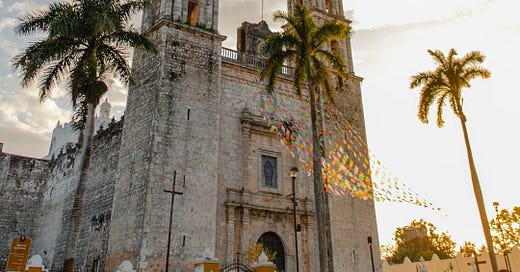


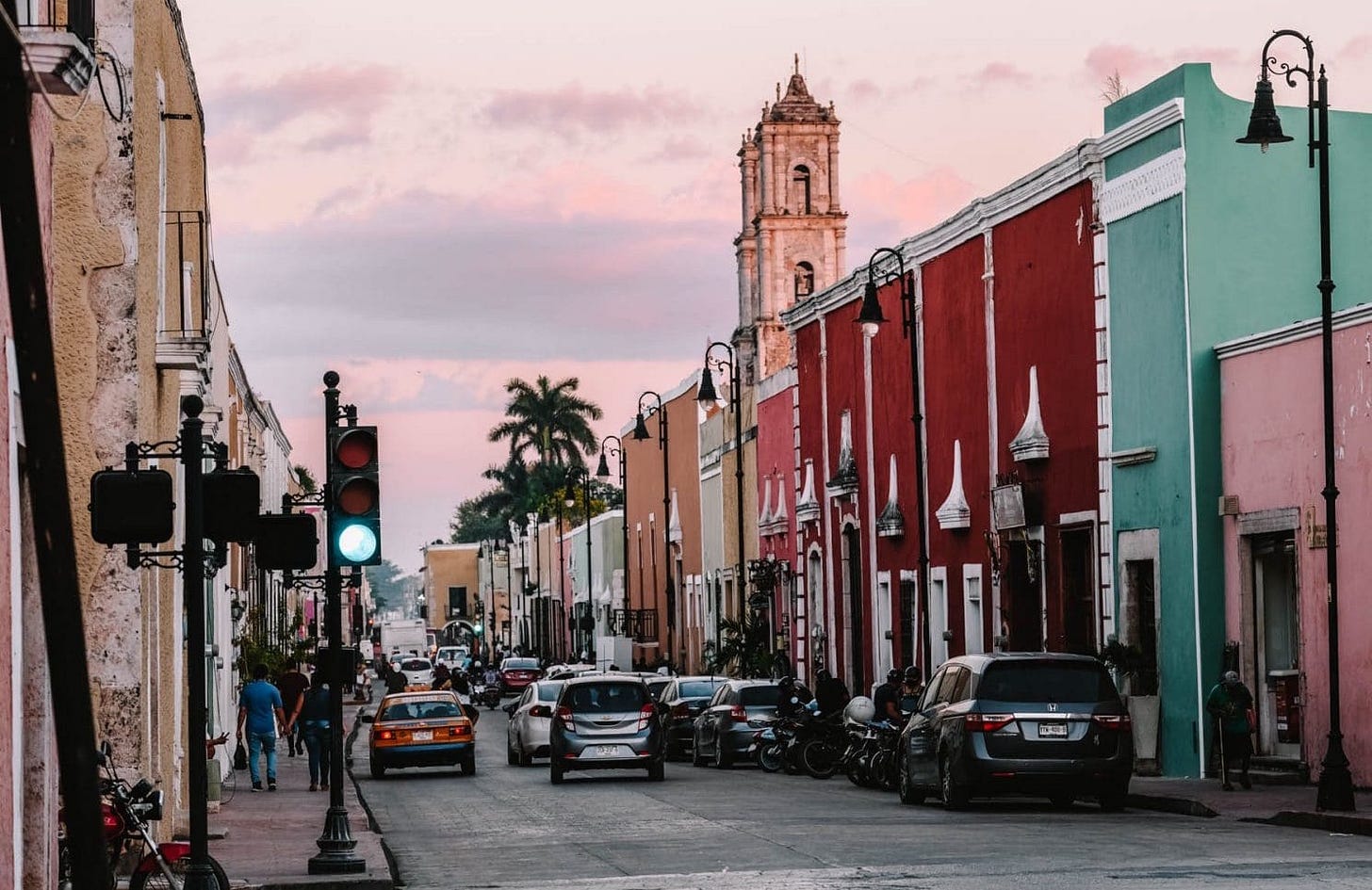
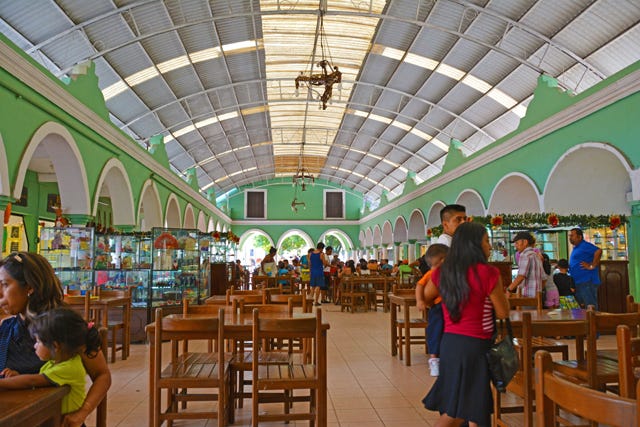
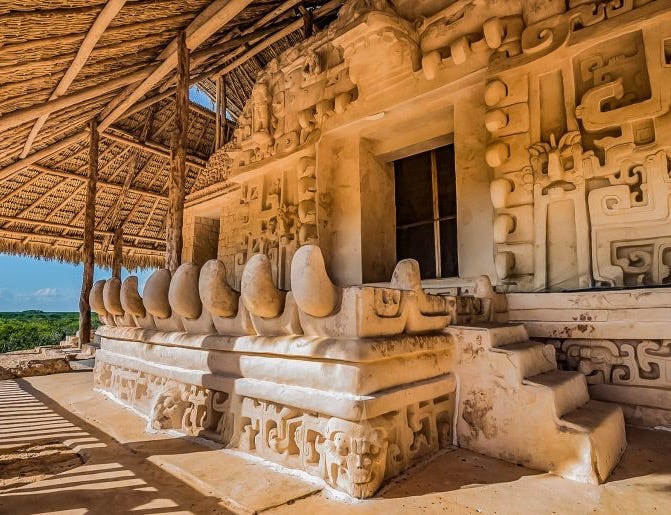
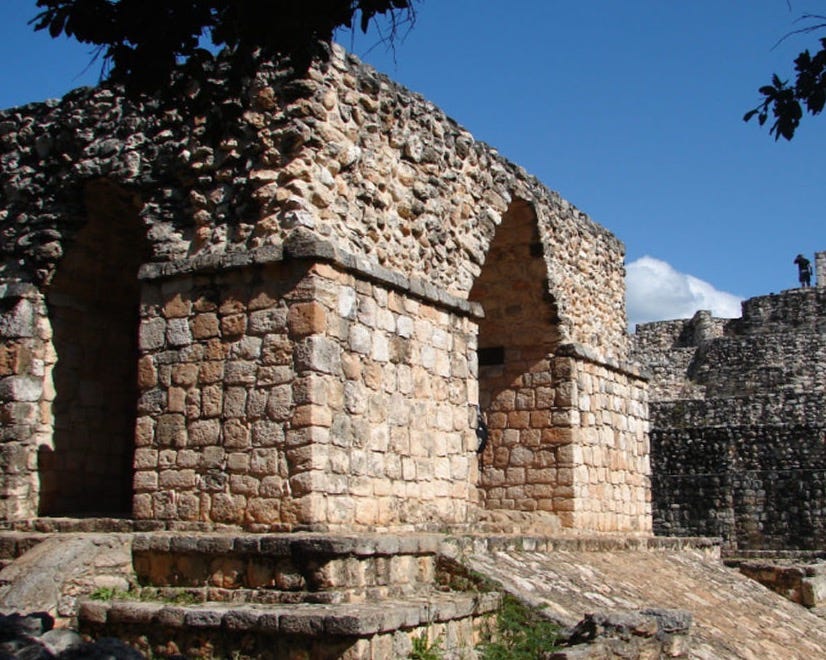
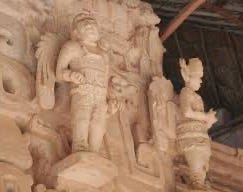
The Caste war and Valladolid's history is full of pain and passion. I'm so glad the Maya finally had several, much too long-awaited, successes avenging their land and culture and dignity. Love how you condense that history into a flowing, easy to read and follow piece. We missed ek Balam when there, I think it was closed for some reason (?), but you reminded me how incredible it is. Gotta get there!
Fascinating. I did not know any of this history before, and your writing is wonderful in its details. I'm particularly interested in the stucco frescos that appear to be Greek or Indian--even in a lotus position! Does anyone understand yet how these developed out of the unique culture of Ek Balam?
In particular, I had never heard of the 1847 Caste War of Yucatán, which killed 250,000. It struck me, though, that at the same time on the other side of the world, another subjugated people-the Irish--were suffering through a famine ((1845-1852) that killed one million people from starvation and disease and forced another million people to emigrate.
You also write that "A three century struggle begun in 1543 when Montejo’s nephew subjugated those early Maya did not truly end until 1915 with the Mexican Revolution."
The English first invaded Ireland in 1169, but the crown asserted full control of the country in 1541. Similar to the Maya, the Irish tried numerous times to rebel, and thousands lost their lives as a result. And then the Easter Rising occurred in April 1916. Although it was brutally crushed within a week, it led to the War of Independence (1919-1921) and--finally--to independence on December 26, 1921.
All of which are some interesting parallels that I never knew before!